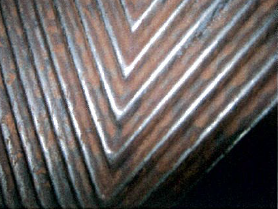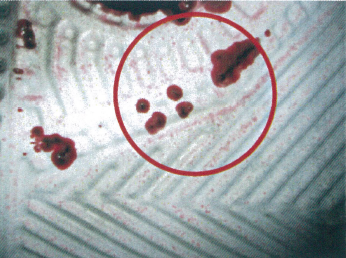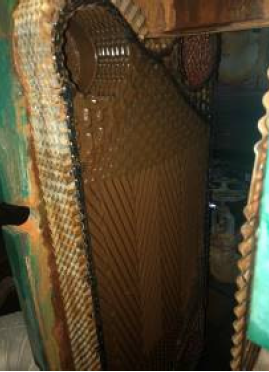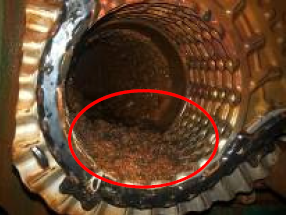Understanding the Issues Concerning Plate Heat Exchanger
- Asia Palm Oil Magazine

- Mar 10, 2021
- 3 min read

Part 1. Company introduction.

HISAKA has been providing plate heat exchangers to the Malaysia’s palm oil market as early as 1974 through prominent wastewater companies like Salcon Centrimax, and later Aquakimia.
Since then, we are continuously providing support to customers in the industry until now. In 2004, HISAKAWORKS SEA was set up to take care of customers around South East Asia region. It is because of our growth of customer in this region that promotes us to provide better support for them.
Philosophy
Our company upholds the philosophy of Magokoro (诚心) which means Sincerity. Our products manufactured are ensured to be “people and environment friendly”.
It is such a philosophy that generates a special relationship with our customers. Through this practice, our customers not only benefit from our durable and good performance products, but their business also prosper.
Thermal Solution Company

Throughout the years of providing heat exchangers to customers in Asia and the world, we have gained great support from the customer. This promotes us to provide more value to our customers. We understand that customers not only enjoy our durable and high-performance product as they wanted more. Hence, we have become a thermal solution company. Other than variable types of the plate heat exchanger, we are also providing a fully welded heat exchanger, spiral type heat exchanger, as well as ball valves.
Part 2. Reactive Maintenance or Preventive Maintenance?
HISAKAWORKS SEA SDN BHD has been positioned at the center of Southeast Asia. Being a manufacturer for this region, we also keep stock for each country to support our customers. As a dedicated service team, we are here to support both situations of reactive or preventive maintenance.
Which is better?
In Japanese culture, it is always better to do preventive maintenance. By doing so, it promotes a longer life span of the item. This is the reason why things in Japan look new, preserved, and long lasting.
Plate heat exchangers may look normal from the outlook even in operation. What happens on the inside may be an unforeseen problem. Plate heat exchanger is designed in a way that each plate has a gasket because of its purpose that can be dismantled, inspected and cleaned. Make sure you check it often to avoid the following issues.
Common Problems Face by Customer
Gasket Melting

This is EPDM gasket that is used for heating purpose. Steam is the heating medium. Often, it is hard to control steam temperature
Sometimes over temperature happens, if happened frequently, it will cause gasket melting.
Late detection may lead to wastage of steam energy and money.
This is what happen when it became worse.
When gasket broke, external leaking will happen.
If double seal gasket were damaged, internal mixing will happen and it will cause product damaged.
Production loss
Always practice to inspect the unit at least once a year and change the gasket by your observation.
Hard Scaling

This is SUS316 plate, used for heating purpose
Steam is the heating medium.
When water quality is not good enough, steam produce is also become “dirty”
Steam contain high dissolved salt of CaSO4 and CaCO3 will generate scale at high temperature.
It is one of the common problems at site.
Even after complete cleaning by chemical, the scale still cannot be fully remove.
There have been a chemical reaction between scale and surface of plate.
Furthermore, it will decrease the heat transfer ability since the scale layer act as a resistance for the heat transfer
If the problem occurred in longer period, crevice corrosion may happen and with the help of chloride ion, it will create pinhole and damaged the entire plate.
If water/steam quality hard to control practice frequent water jet cleaning is reasonable
Serious Fouling

This unit is used to heat up glycerin, using steam as heating medium.
Serious fouling was identified when the unit is disassembled.
The structure of fouling is muddy type
This fouling could seriously block heat transfer and increase pressure drop
This is unit was installed as heat recovery oleochemical plant.
When dismantle, both hot and cold side contain wet mud on the surface of plates.
Because of serious fouling, this unit is unable to achieve desire temperature and cost more usage of heating/cooling medium.
Cost of unit increase.
The fouling not only occurred at the plate surface, it also build-up in the port holes.
This surely will increase pressure drop.
Overall, this unit is in a bad condition.
Hisaka will provide total overhaul and cleaning
All the above samples are examples of extreme cases of units being neglected for too long. Do not let your equipment become your next problem that stops your plant operation. Should you require and service or assistance, feel free to contact us.
Tel: +603 8081 4185
Fax: +604 8081 7185
Email: consult@hisaka-asia.com
Address: No 2, Jalan TP 2, Taman Perindustrian SIME UEP, 47600 Subang Jaya, Selangor Darul Ehsan, Malaysia.



















